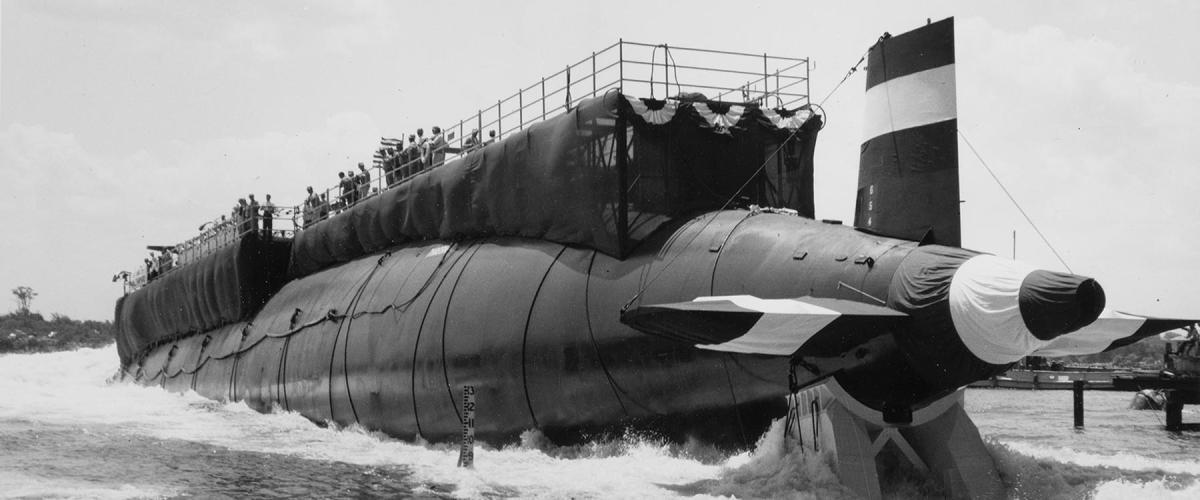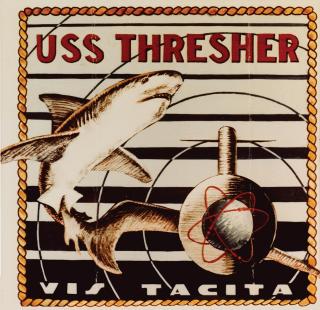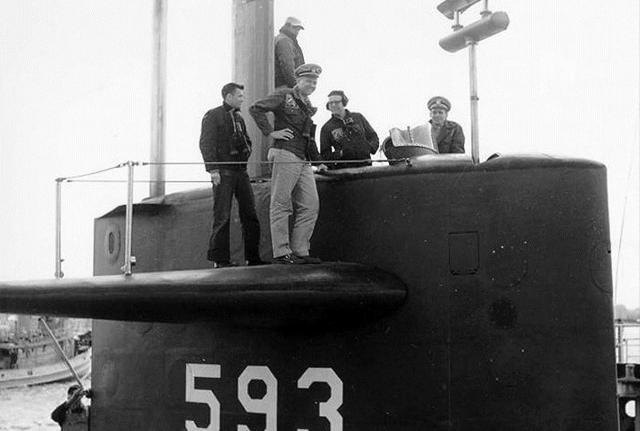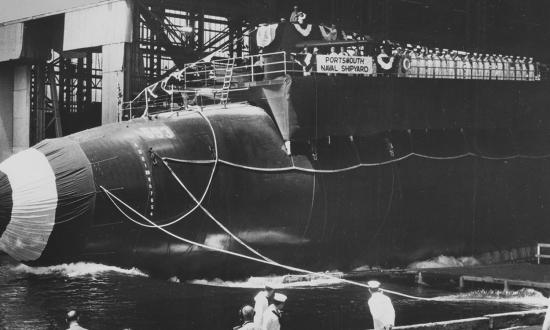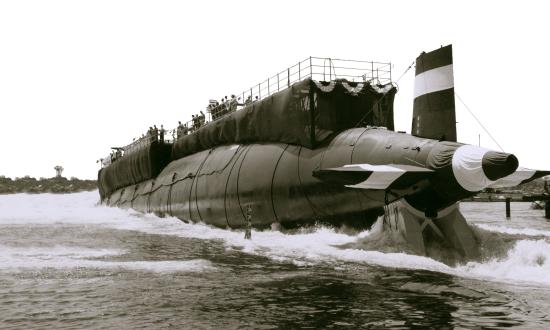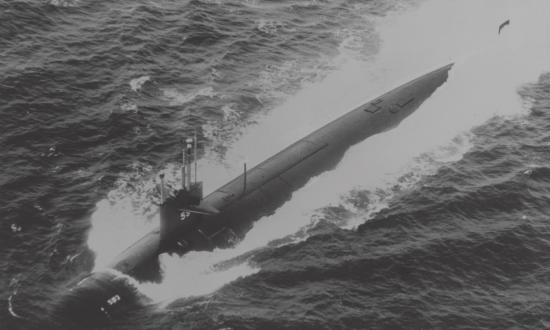The nuclear-powered fast-attack submarine USS Thresher (SSN-593) lost propulsion and sank 60 years ago, on 10 April 1963.1 She was lost with all hands during a sea trials deep-dive test after nine months of repairs and modification at Portsmouth Naval Shipyard. Several significant factors contributed to this disaster, and the Submarine Safety (SubSafe) program created afterward could have prevented it.
Lawsuit Reveals Mysteries
Since 2017, a volunteer research team has been studying the Thresher incident, but little information was available until recently. A 2019 Freedom of Information Act (FOIA) lawsuit compelled the Navy to release declassified information starting in September 2020—information that now exceeds 4,000 pages. The most informative is the Naval Court of Inquiry (NCOI) report, with more than 1,700 pages of testimony and 255 supporting exhibits.2 After studying the data, the research team believes the overarching cause of the Thresher’s loss was a failure to appreciate the inherent danger in nearly doubling the class’s maximum operating/test depth, from the 700 feet of other post–World War II submarines to 1,300 feet.3
The research team discovered several discrepancies in the NCOI report, the most perplexing of which is a missing chart recording of acoustic data from the Thresher’s last 20 minutes that was briefed to the NCOI by Bruce Rule, an acoustic analysis expert who spent 42 years in the Office of Naval Intelligence.4 Information released under FOIA substituted a different acoustic chart from the same acoustic array, but it shows the wrong direction. In November 2021, when this chart was released, Rule indicated it was not the chart he had analyzed and used to brief the NCOI.
NCOI Speculates on the Loss
Although many factors contributed to the death of the Thresher, the NCOI report Opinion 1 covers the most important:
That the loss of the U.S.S. Thresher was in all probability due to:
a. An initial flooding casualty from an orifice between 2” and 5” in size in the engine room, which continued, compounded by
b. Loss of reactor power due to an electrically induced automatic shutdown,
c. Inadequate operating procedures with respect to minimizing the effects of a flooding casualty and the loss of reactor power, and
d. A deficient air system, susceptible to freeze-up, with low capacity and low blow rate.
Major Flooding Unlikely
The NCOI report was submitted to Congress in June 1963; however, the Thresher’s crushed and twisted hull was not found and photographed until a year later. If the NCOI had seen these pictures, it might have come to a different conclusion.
Rule has asserted that the missing acoustic chart he briefed did not record the strong, resonant sounds he expected from major flooding and had seen in other incidents. The sea trials escort, the submarine rescue vessel USS Skylark (ASR-20), heard compressed air blowing seawater from the Thresher’s main ballast tanks in a failed attempt to surface. She also heard the hull collapse but did not hear the sound of major flooding.
The Thresher must have been excessively negatively buoyant—estimated to be about 20,000 pounds passing through 1,300 feet—likely the result of some combination of excessive leakage and failure to pump out seawater to maintain neutral buoyancy as the submarine went deeper. The submarine would have gotten heavier as her depth increased because increasing seawater pressure would increase leakage rates and compress the hull, reducing its volume.
Silver-Brazed Joints
The NCOI report Opinion 5 listed failure of a silver-brazed joint as the top possible flood source. Silver brazing is a technique to connect pipes by melting a silver alloy that flows into pipe joints to seal them. If done properly, it is as strong as welding but much less expensive, easier, and faster. However, there had been six recent failures on submarines—despite their having passed pressure tests—and then–Vice Admiral Hyman Rickover, director of the Naval Nuclear Propulsion Program, was so concerned that he had all the silver-brazed joints replaced by welded joints in the reactor plant and piping passing through the reactor compartment.
An ultrasonic nondestructive test for silver-brazed joints was perfected in early 1962 and was just coming into use as the Thresher entered the shipyard. All joints disconnected for shipyard repairs and modification were tested, but only 145 unworked joints were tested, with a 14 percent failure rate.
The Thresher had 3,326 silver-brazed joints two inches or more in diameter in critical systems (high-pressure air, seawater, and hydraulic), most of which were not tested. These systems did not cause major flooding, but they may have been a source of excessive leakage.
Reactor Shutdown
The NCOI believed the Thresher’s reactor scrammed (shut down) because the reactor coolant pumps, which transfer heat to the steam generators, appeared to have stopped seven minutes before the hull imploded. The scram recovery procedure then secured steam to the engine room, causing a loss of propulsion.
Reactor coolant pumps were being run in fast speed, an unreliable mode for a deep-dive test that likely contributed to their failure. The NCOI recommended the pumps be run in slow speed for deep-dive tests, but there is no explanation so far as to why there was no guidance to use slow speed until after the Thresher was lost.
Use of Latent Heat to Surface Not Authorized
When a reactor scrams for safety—for example, when the reactor coolant pumps stop—neutron-absorbing control rods are inserted into the reactor core, stopping the fission process. Heat continues to generate for a short time by fission product decay. Rickover testified that latent heat from fission product decay and the residual heat in the liquid and metal in the reactor plant generates enough steam for a few minutes for the main engines to drive the submarine to the surface.
Rickover had authorized a procedure to maintain steam flow after a reactor scram and to use the latent heat for emergency propulsion for use on the first fleet ballistic-missile submarine, the USS George Washington (SSBN-598), but not on other nuclear submarines. The scram recovery procedure at the time of the Thresher’s loss required that steam flow be secured after a scram. No information released so far explains why this well-known emergency procedure was not authorized for the much-deeper-diving Thresher class, although it subsequently was approved for all nuclear-powered submarines.
Out-of-Date Procedures, Design, and Construction
The Thresher class and earlier nuclear submarines were designed and built to the standards for diesel-electric boats, which were optimized for shallow operating depths and slower speeds. The Thresher’s toilets, for example, used sea pressure to flush as on older submarines, making it exciting to flush at the 600 psi of 1,300 feet. The pumps used to pump variable ballast to sea were not designed to remove seawater if there was excessive leakage. The main ballast tank blow system was not designed or tested to be a backup if nuclear propulsion was lost deep.
Computer studies of casualty recovery from 1,300 feet were not completed until a year after the Thresher entered the shipyard for the last time. The results were surprising, as the main ballast tank blow rate and air bank capacity were found to be too low.
The higher speeds of a nuclear submarine made a control surface casualty more significant. This study showed that limits on speed were needed to prevent going too deep or broaching the surface if a control surface, especially a stern plane, stuck in a full dive or rise position at high speed. The study also showed that speed was needed to go shallow quickly if there was flooding. The safe operating envelope that was formulated after the study provided guidance to the operators on the safe speed as depth increased.
The study showed that the Thresher’s design used many legacy systems from shallower-diving submarines that were strengthened for the increase in sea pressure, not designed for it. The Thresher class’s operating and emergency procedures were based not on casualty recovery studies, but on legacy procedures.
High-Pressure Air System Conical Strainers, Orifice Plates Not Removed
The timing, duration, and intensity of the Thresher’s main ballast tank blows cannot be verified because the relevant acoustic chart is missing. However, reports of intermittent air flow to the ballast tanks heard by underwater telephone monitors on the Skylark and subsequent main ballast tank blow tests on the Tinosa (SSN-606) indicate the Thresher was unable to blow her tanks as designed.
The NCOI ordered a main ballast tank blow test on the Thresher’s sister ship Tinosa, under construction at Portsmouth Naval Shipyard. The test failed because conical strainers and orifice plates were found in the inlet piping to the two high-pressure air-reducing valves. Those strainer and orifice plate assemblies were not part of the system design.
The strainers were crushed by ice formation because of moisture in the compressed air that alternately blocked or reduced air flow in the high-pressure air system, including to the main ballast tanks. This was caused by the temperature drop of the expanding air (Joule-Thomson effect) as air passed through these restrictions.5
SubSafe Standards
The Thresher’s loss was a catalyst for the SubSafe program. SubSafe ensured designated systems and parts of systems critical to submarine safety—hull, seawater, hydraulic, high-pressure air, and ship’s control surfaces—were built, maintained, and tested according to the plans. New systems were installed, including the emergency MBT blow system that routed compressed air from the air banks in a shorter path with minimum restrictions to the main ballast tanks. Because of unsatisfactory documentation, the NCOI struggled to verify that the auxiliary seawater system in the Thresher’s engineering spaces was properly pressure tested. A SubSafe work package would have solved that.
Other Contributing Factors
Many other factors contributed to the Thresher’s loss. Some that should be analyzed are officer operational experience and unsafe deep-dive test planning, especially considering the possibility of remaining explosive shock testing damage. Crew certification, fast cruise, and preparation for subsequent sea trials were inadequate.
Ultimately, the Thresher was not ready to go to sea. Her loss was a preventable tragedy, but it contributed to the safety of later U.S. Navy submarines.
1. Norman Polmar, “What Killed the Thresher,” Naval History, April 2023.
2. Commander-in-Chief, U.S. Atlantic Fleet, “Record of Proceedings of a Court of Inquiry Convened at U.S. Naval Submarine Base, New London, Connecticut, and Portsmouth Naval Shipyard, Portsmouth, New Hampshire,” n.d. [submitted to the U.S. Congress 24 June 1963] with endorsements.
3. Norman Friedman, U.S. Submarines Since 1945, rev. ed. (Annapolis, MD: Naval Institute Press 2018), 266–68.
4. CAPT Jim Bryant, USN (Ret.), “Solving Mysteries of the USS Thresher (SSN-593),” The Submarine Review, December 2022, 78–85.
5. CAPT Zack Pate, RADM David Goebel, and VADM George Emery, USN (Ret.), “The Tragic Loss of the Nuclear Submarine Thresher; 10 April 1963,” The Submarine Review, June 2018, 130–35.



